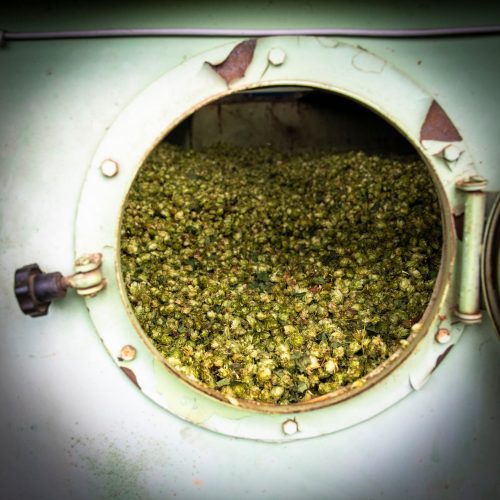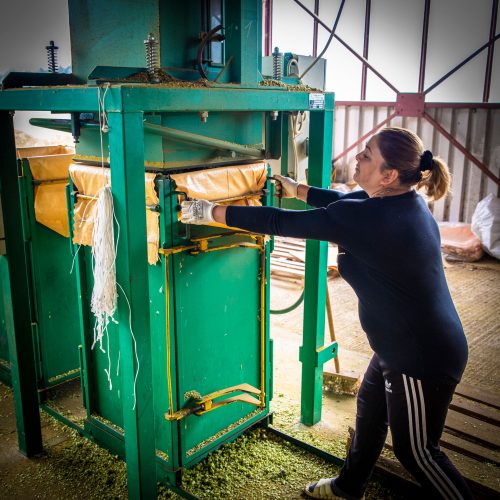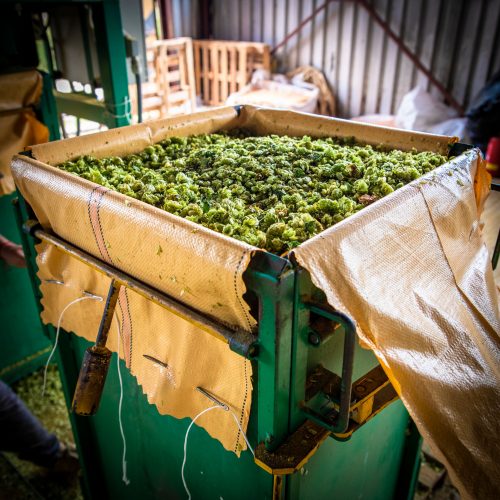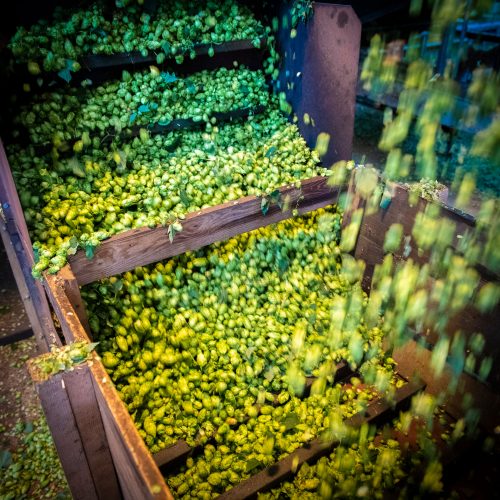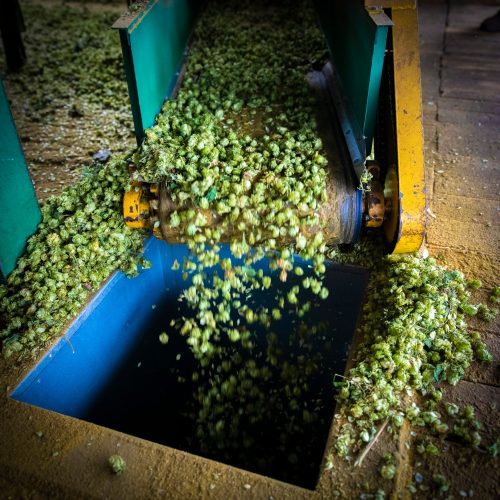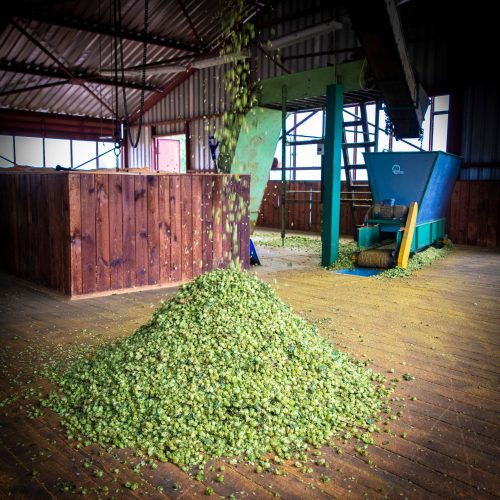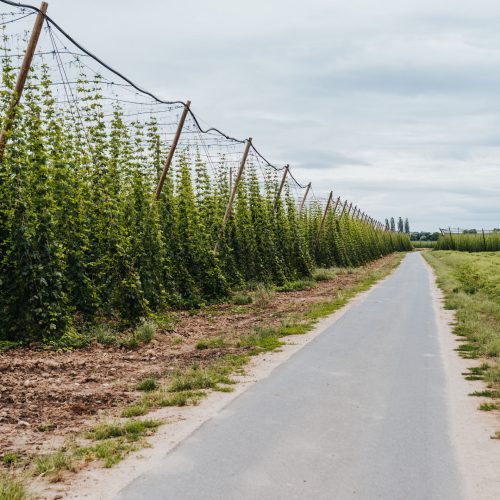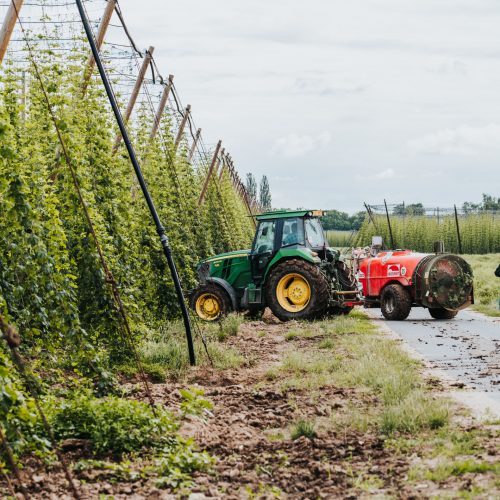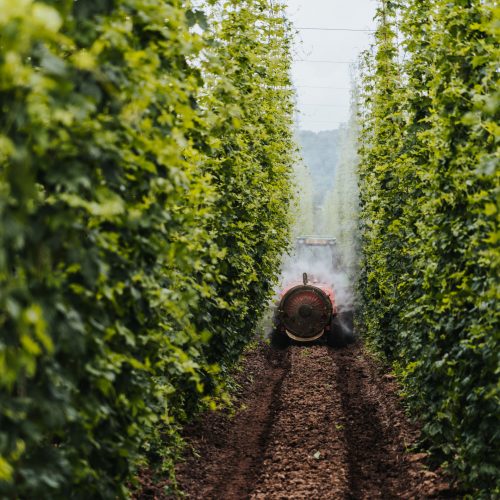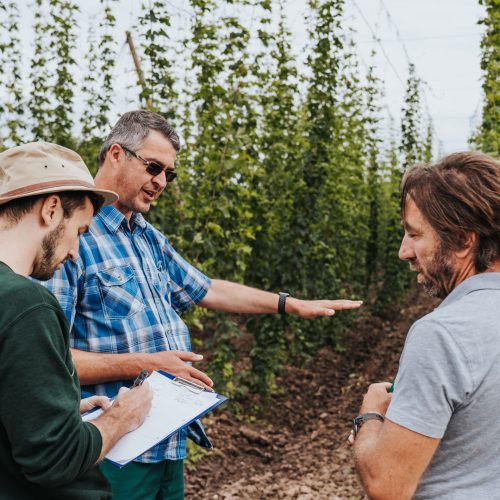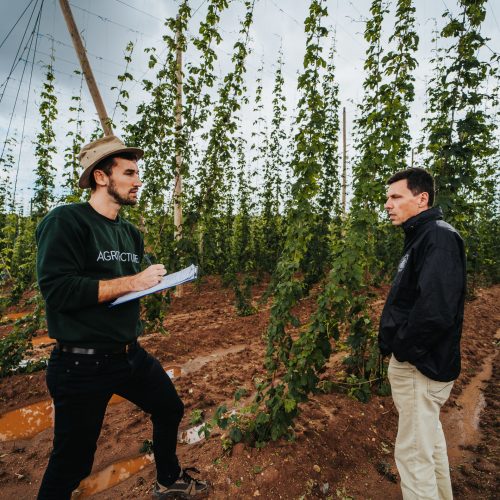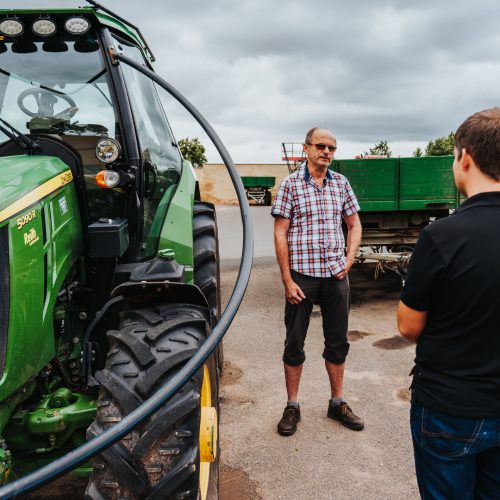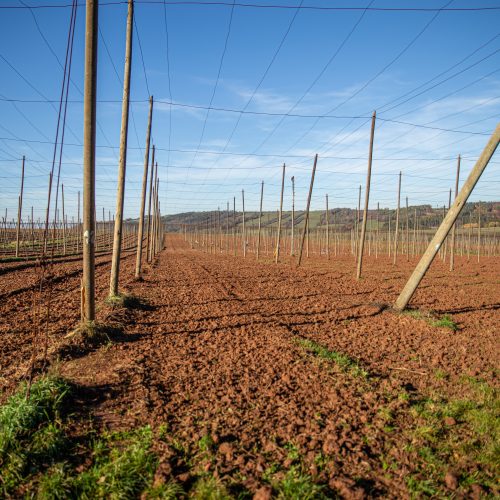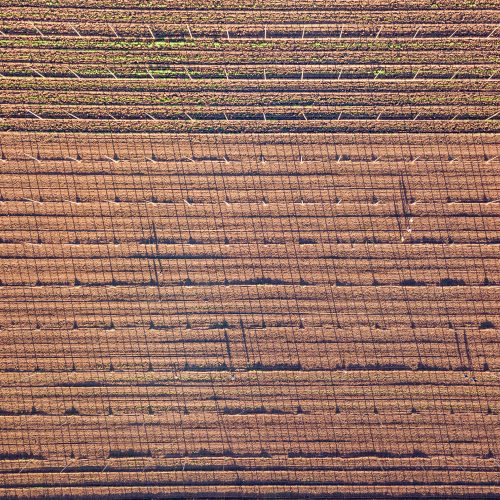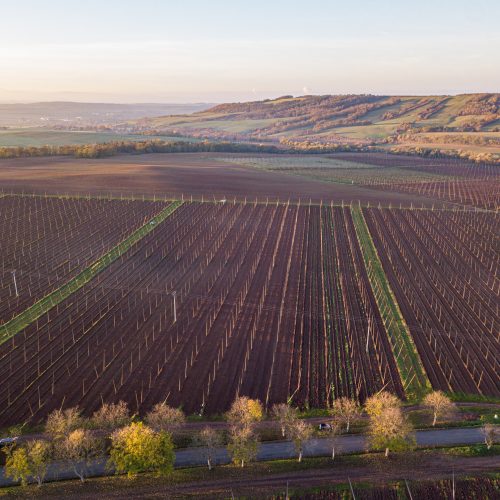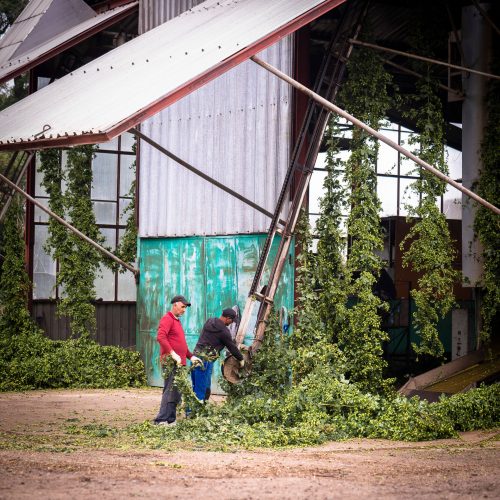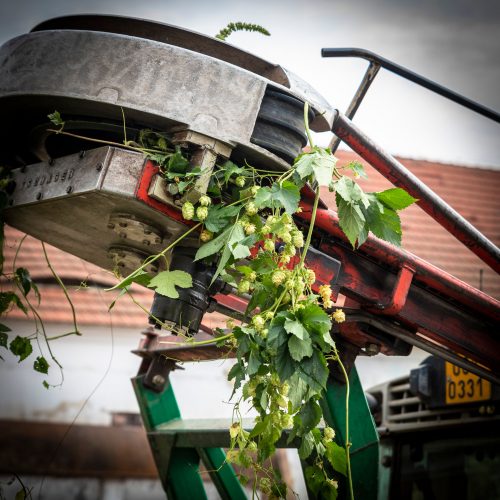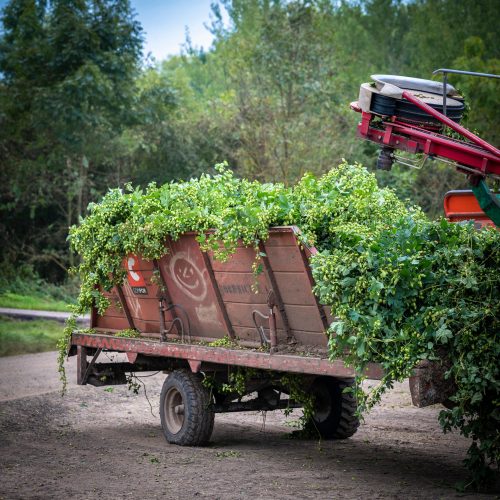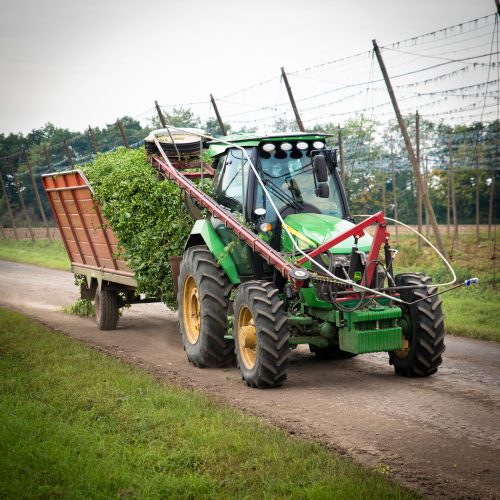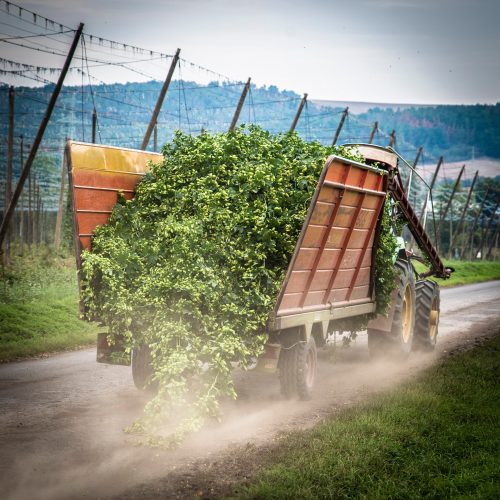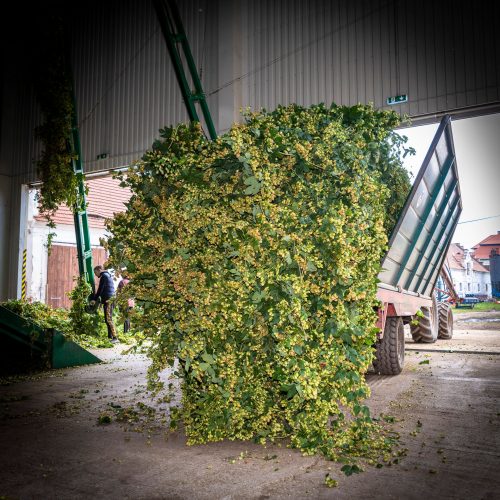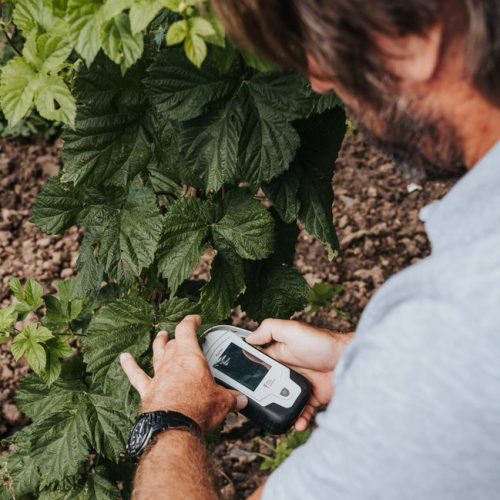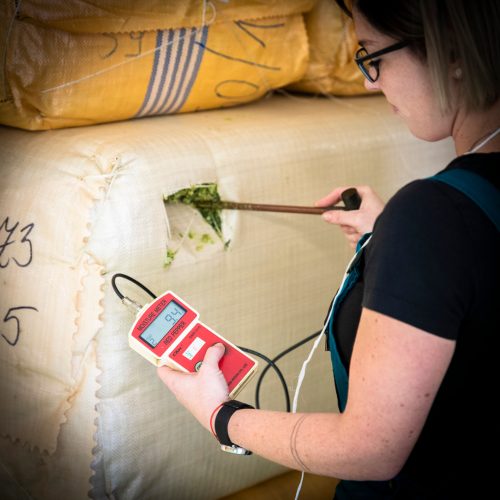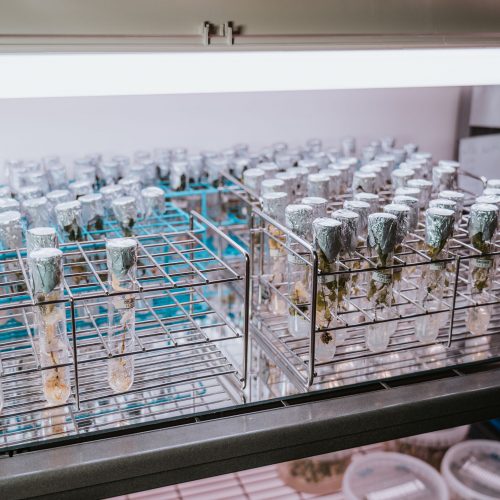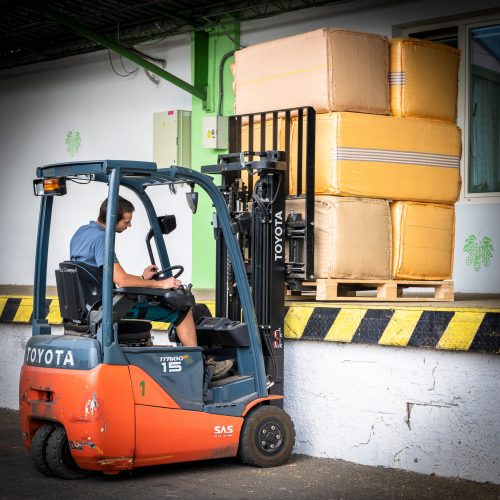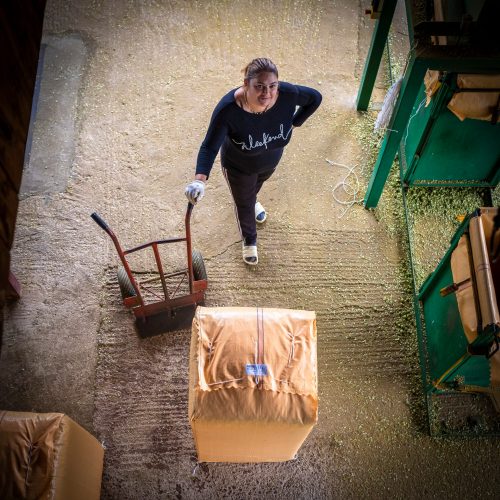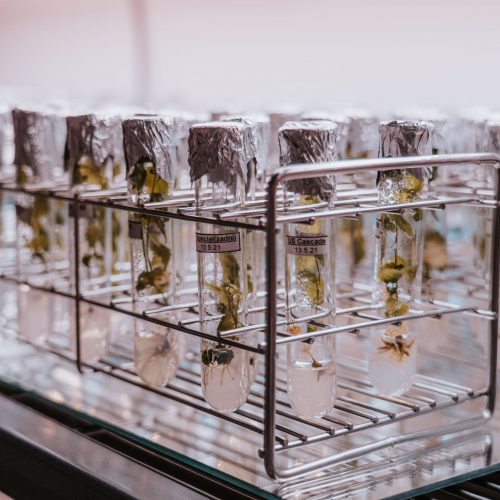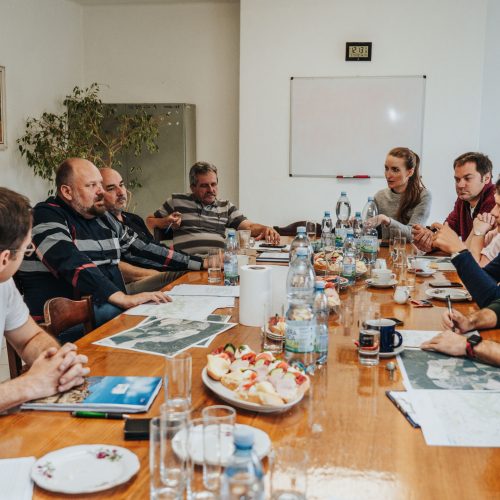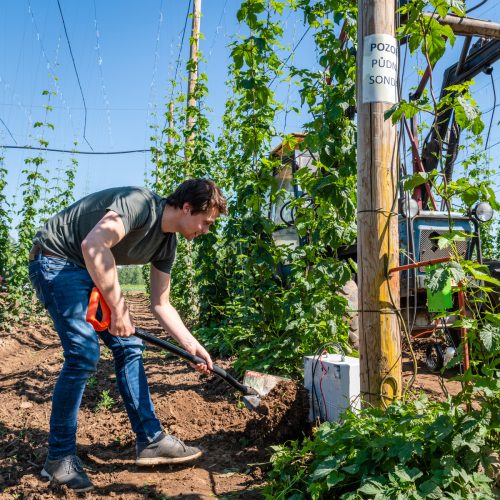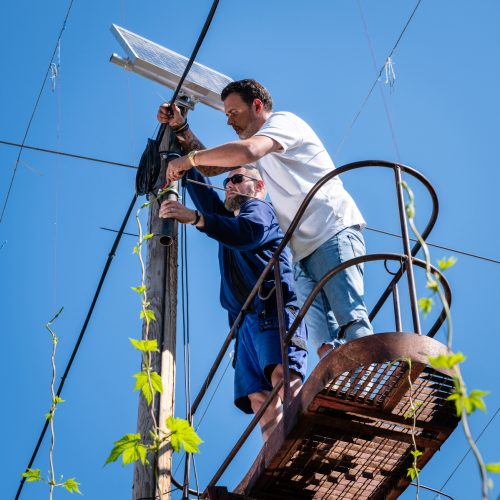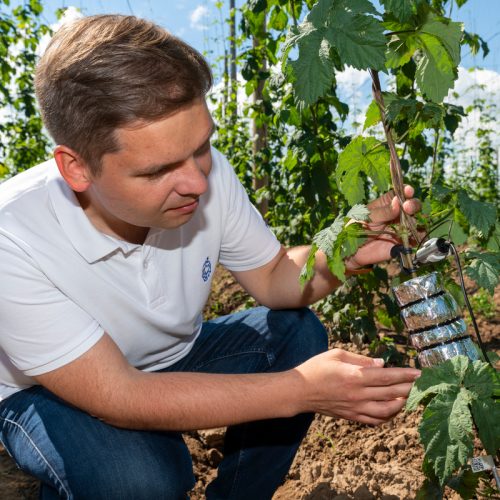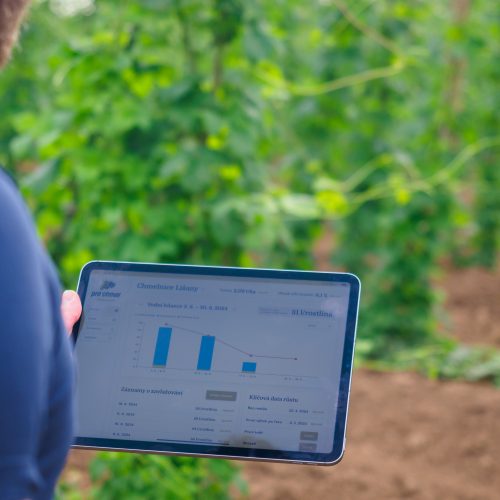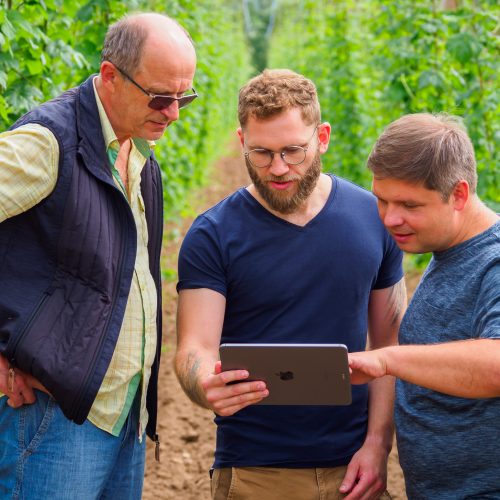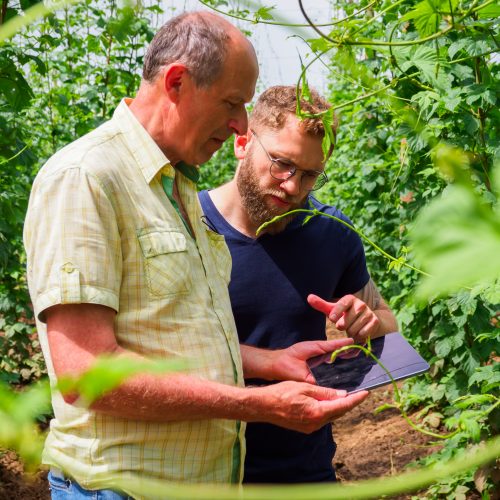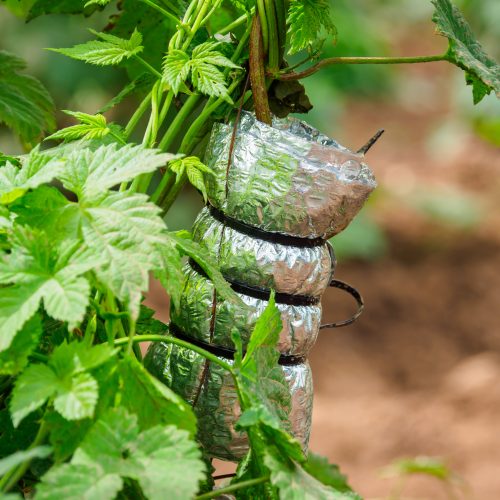We are here FOR HOPS
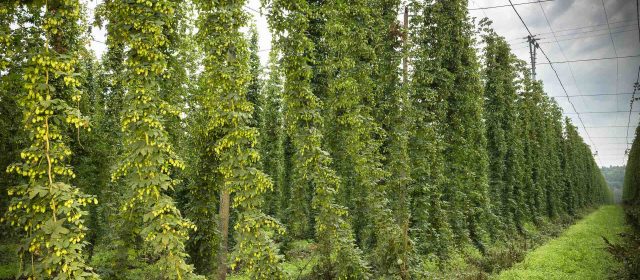
We help preserve their quality and yield, we help hops cope with adverse weather and climate changes.
Without hops, beer would taste differently to what we now are used to. Together with water and barley, hops are an essential ingredient which we need to take care of so that millions of people in Czechia and around the world can enjoy Czech beer.
Climate changes, and especially droughts in recent years, are ever worse enemies of hops. That is why companies from all around the world have joined to help Czech hop growers start irrigating with the help of state-of-the-art technologies.
Czech hops = green gold
The Czech Republic is one of the world leaders in hops productions with a tradition of more than a thousand years. Almost 6,000 tonnes of hops are grown on 5,000 hectares every year here. 80% of this volume is represented by the most famous variety of hops – Saaz semi-early red bine hops (Žatecký poloraný červeňák) – with their light aroma and unmistakable taste, typical, for instance, for pilsner lager.
Climate changes and hops do not go together
Hops, more than other crops, are dependent on sufficient moisture. If they have enough water, they can grow up to seven meters in two months. And their yield is then rich and high-quality. If there is not enough water, the plant will languish.
In the past ten years, hops production has been very volatile, namely due to unstable weather and not enough water. An example is the year 2012, when Czech hop gardens produced only 4.3 thousand tons of harvest, while four years later over 7.7 thousand tons. Thus, a difference of 44%, while the area of hop gardens changed by only 8.5%. On the contrary, the yield in 2022 was the worst in the past ten years. For the world-famous Saaz semi-early red bine hops, the yield was actually the worst since 1964. Year-on-year fluctuations have exceeded one thousand tonnes, which is almost a fifth of production.
„Growers have had to abandon some areas completely in recent years due to decreasing levels of ground water. This year´s or last year´s downpours have changed nothing. If it rains only somewhere, only sometimes and in the form of torrential rain, it mostly does more harm than good. Water does not have time to soak in, but flows away, and the plant suffers from drought again.“
Hop growers in the Saaz region (Žatecko), which is the most important region in Czechia from the hop growing perspective, are especially vulnerable. The majority of their hop yards is part of a quite small microclimate, where the nearby Ore Mountains (Krušné hory) create a rain shadow. Because of this, the annual precipitation total in the area is only about 450 millimetres. Meanwhile, the nation-wide average is between 600 to 750 millimetres.
„The lack of moisture together with extreme temperatures also has another effect: on top of smaller yields, it leads to a decrease in so-called alpha bitter substances found in hop cones that, together with fine aromatic essential oils, give Czech hops their typical nicely bitter taste and fragrance. For which classical Czech lager is appreciated all over the world.“
There is no beer without hops
Brewing beer without hops is possible, but the beer does not taste good. It lacks the typical bitter taste and beautiful smell which have made Czech beer famous around the world.
They once tried to brew a hop-free beer in Plzeňský Prazdroj and let people taste it. Their reactions say it all. Hops are simply essential for beer.
The world for Czech hops
That is why companies and experts from all around the world have come together to help preserve the quality and harvest of hops. The project called “FOR HOPS” was created and is run by Plzeňský Prazdroj, its mother company Asahi, and Microsoft. Other partners in the project include the Hop Research Institute, the Hop Growers Union, experts from the Czech University of Agriculture, the Canadian company TensoAI, and developers from the Czech studio Ackee.
„In order for hop growers to be able to irrigate as efficiently as possible, they need the most accurate data about the soil and climate conditions in a specific hop yard. Not on the level of a region or a district, but on an individual level for each hop yard, line after line, sometimes even plant after plant. And on top of that, they need to understand how and why plants respond to a specific situation.“
During autumn 2021, we fitted the first six hop yards in the Saaz region with weather stations and soil sensors. We gradually added time-lapse cameras and placed so-called hop ECG sensors directly on hop plants. These provide unique information about what the plants need and how they develop depending on the weather.
After two years of measuring the impact of weather on the growth of hops, and after two full vegetation periods, FOR HOPS has an extensive information database and brings its first tangible results. The project measured the amount of water a hop plant needs during one season for the first time in history. During their vegetation period, hop plants consume on average 2 litres of water for each stem every day, which means 10-12 litres of water for the whole plant. On top of that, we have discovered how long water stays in the soil with regard to various types of weather, and how much it soaks down to deeper levels in the ground. This provides a foundation for hop farmers to know how much water they need to supply their hop yards so that plants continue to flourish.
The online database is available to all the participating farmers. This way, they have a detailed overview of the weather and climate over the past two years, the humidity and temperature of the soil at various depths, and of the increase in biomass in hop yards. The comprehensive data enable adjusting the care for hops, and at least partially combat climate change.
Application teaching hop farmers how to irrigate
The database provided a base for the development of the first mobile application in the world that “tells” hop farmers when, where and how much water they should use to irrigate their hop farms. The application works on a standard smart phone and was created by Czech developers from the studio Ackee based on a predictive model from the Canadian company TensoAI. It works by using hundreds of millions of pieces of data from sensors located on hop farms in the soil and on the hop plants, from weather stations and satellite images, as well as other sources.
Based on previous levels of precipitation, soil humidity and irrigation, the application calculates the volume of needed (missing) water that ideally should be provided to hop plants in order for farmers to get the expected yield and content of alpha acid, which is essential for the bitterness of beer. The application not only helps hop farmers how to irrigate during the respective week, but also helps them predict how much water in total they will need for their hop farms from spring to harvest.
„The application has been optimized to be accessible from several platforms and provide the same user experience on all devices. In the background, the application communicates via an API interface with the predictive model from TensoAI. The predictive model runs in the Azure cloud from Microsoft and is based on machine learning methods. Thanks to artificial intelligence, we are able to provide forecasts even to those hop farmers who have no sensors located on their farms.“
The original six farmers from the FOR HOPS projects were joined by six more during the 2024 season, who had not participated in the project before and had no sensors or other measuring devices installed on their farms. In total, the application will be available in the pilot operation to 12 Czech farmers, which is a tenth of all growers in Czechia. The application will be tested on a total of 28 hop farms throughout the whole season.
„We have developed an application that helps hop farmers and shows them how to use water efficiently. The application can advise them on where, when and how much water they should use to irrigate, specifically down to the level of individual hop farms. When it comes to other crops, similar technology is quite common, however, hops have several specific features and growers have not had anything like this until now. Hop farmers enter the coordinates of their farm, as well as their expected yield of hops at the end of the season that should correspond to the long-term average, into the application. Based on detailed data from the previous two years of measurements, weather forecasts and irrigation data from previous periods, they can see how much water they need to use in order for the hop plants to flourish.“
FOR HOPS continues
The FOR HOPS project will also continue with more monthly measurements and analysis of all the data from the participating hop farms. The application will learn and adjust its algorithm based on reality. In the future, the goal is to offer the application to more Czech hop farmers.
Join our mailing list


